
Click play below to listen to our approach to reading intervention for upper elementary students.
In this special episode of The Stellar Teacher Podcast, we’re giving you a behind-the-scenes look at one of our most exciting new resources—the Stellar Teacher Reading Intervention Kit! I’m joined by my teammate Emily, one of our amazing curriculum writers and the mastermind behind this new intervention resource designed specifically for upper elementary students who struggle with decoding. If you’ve ever felt unsure about how to approach reading intervention or wondered how to fit it into your already packed schedule, this episode is for you.
Emily and I talk candidly about the biggest challenges teachers face when it comes to reading intervention—limited time, lack of confidence, and keeping older students engaged—and how each of those challenges shaped the design of this kit. You’ll hear about our goals, the research that guided us, the beta testing process, and the thoughtful routines we built to make intervention practical, effective, and doable in just 15 minutes a day.
Whether you’re looking for tools to support struggling readers, or you just want to feel more confident about teaching phonics in the upper grades, I hope this episode gives you inspiration and clarity. I truly believe this resource is going to make a huge difference in classrooms—and I can’t wait for you to experience it for yourself.
In this episode on reading intervention, we share:
- Why traditional phonics programs designed for K–2 don’t meet the needs of upper elementary students
- The top three challenges teachers face when providing reading intervention—and how to overcome them
- How we designed 15-minute lessons to make intervention realistic and effective for busy teachers
- The importance of age-appropriate materials that build student confidence, not shame
- What makes a reading intervention lesson truly explicit, systematic, and engaging
- How consistency and simple routines can lead to big gains in student decoding skills
- Behind-the-scenes insights into how we built and tested our new Stellar Teacher Reading Intervention Kit
Resources:
- Stellar Teacher Reading Intervention Kit
- Join The Stellar Literacy Collective
- Sign up for my Private Podcast: Confident Writer Systems Series
- Sign up for my FREE Revision Made Easy email series
- If you’re enjoying this podcast, please leave a review on Apple Podcasts!
Related Episodes and Blog Posts:
- Episode 260, Dear Stellar Teacher: Our Phonics and Intervention Confessions (and What We’d Do Differently!)
- Episode 177, A Close Look at the 5 Pillars of Reading Instruction
- Blog, Mastering Reading Instruction: The Power of Scarborough’s Rope Model
Connect with me:
- Join my newsletter
- Shop my TPT store here
- Subscribe to our YouTube channel
- Instagram: @thestellarteachercompany
- Facebook: The Stellar Teacher Company
More About Stellar Teacher Podcast:
Welcome to the Stellar Teacher Podcast! We believe teaching literacy is a skill. It takes a lot of time, practice, and effort to be good at it. This podcast will show you how to level up your literacy instruction and make a massive impact on your students, all while having a little fun!
Your host, Sara Marye, is a literacy specialist passionate about helping elementary teachers around the world pass on their love of reading to their students. She has over a decade of experience working as a classroom teacher and school administrator. Sara has made it her mission to create high-quality, no-fluff resources and lesson ideas that are both meaningful and engaging for young readers.
Each week, Sara and her guests will share their knowledge, tips, and tricks so that you can feel confident in your ability to transform your students into life-long readers.
Tune in on your favorite podcast platform: Apple, Google, Amazon, Spotify, Castbox, and more! If you’re loving this podcast, please rate, review, and follow!
Podcast (stellar-teacher-podcast): Play in new window | Download
Sara
Hey teachers, welcome back to the podcast. Today, I’ve got a special guest you may be familiar with. I’m joined by my teammate Emily, who is my co-host for our Dear Stellar Teacher episodes—but today, she’s actually the one being interviewed!
Emily is one of our primary curriculum writers here at The Stellar Teacher Company, and she is the brilliant mind behind so many of the resources inside The Stellar Literacy Collective. Today, she’s giving you a behind-the-scenes look at one of the most exciting resources we’ve ever created: our Stellar Teacher Reading Intervention Kit.
This is a brand-new resource specifically designed for upper elementary teachers who are supporting students who struggle with reading—specifically decoding—in the upper elementary grades.
So, if you’ve ever wondered how to approach intervention in your upper elementary classroom… or if you’ve felt overwhelmed trying to squeeze intervention into your already packed schedule… or even if you’ve questioned whether you’re doing it correctly—this episode is for you.
We’re going to talk about why we created this intervention kit, the unique challenges it’s designed to solve, what makes an intervention lesson effective, and ultimately, why we hope you and your students will benefit from using it.
Emily is going to walk us through the creation process and talk about the research, the routines, the beta testing, the refinement—everything that went into creating this resource.
So hopefully, you’ll get really excited about getting access to it, because we’re rolling it out next week. And of course, if you want to learn more, you can head to stellarteacher.com/intervention.
Let’s go ahead and dive in.
Hey Emily, welcome back to the podcast—in more of a guest format this time!
Emily
You do such a good job of making me feel so special—even though I’m not that special.
Sara
You are so special!
Emily
I do need to remind myself how amazing it is to get to be on The Stellar Teacher Podcast, because that’s where it all started for me.
Sara
I do remember that! And to go full circle here, Emily has been a part of The Stellar Teacher Company for about a year and a half—which is wild, because to me it feels like it’s been so much longer.
When we interviewed Emily, I remember you mentioned you had heard me on the podcast, and you were like, “Oh my gosh, I get to talk with you!” But something that really stood out from your interview was your passion for phonics, your content knowledge, the way you talked about incorporating phonics in your classroom, and all the research you’ve done and everything you’ve learned about the science of reading since leaving the classroom.
It’s always been on my wish list to create an intervention kit specifically for upper elementary teachers, and after your interview, I thought, Emily is the one who is going to do this.
So, it has been so great to watch your transformation as a curriculum writer—getting to the point where you can lead this project in depth.
Emily
Well, thank you for your kind words. You looked into your crystal ball and saw me making this intervention kit! But you’re right—phonics is a passion of mine, especially in the upper elementary classroom. So I’m excited to talk about my baby—the intervention kit.
Sara
We’ve been working on this since last November, I think—that’s when we really started digging in. So obviously, it’s taken us a while to complete, and we’ve always said we didn’t want to rush this process because we wanted to get it right.
Before we dive into what’s included, how it’s set up, and how it’s structured, can you tell us a little bit about why there’s a need for an intervention resource specifically designed for upper elementary students?
Why can’t third, fourth, or fifth grade teachers just use the phonics resources or programs that are designed for K–2?
Emily
Yeah, so a couple of things. First of all, I think—and we touched on this a little bit in our last episode where we talked about our phonics confessions—but in the upper elementary grades, teachers don’t have the same training or access to resources that our K–2 teachers have. And it’s so unfortunate because, as we’re seeing, our third, fourth, and fifth grade students (and above) are coming to us with more and more gaps.
And I hate to bring up the “C” word, but we know that COVID did play a role in these gaps. So the need for intervention in upper elementary is just as important as it is in K–2.
Another thing I started to notice when we looked at K–2 programs is that they were designed for 5-, 6-, and 7-year-olds—and they have that sort of “baby-ish” look. So we really wanted to create a program that was not only designed for upper elementary teachers, but also had a more sophisticated look, so students don’t feel like they’re being babied during intervention.
Sara
I know we talked about how our goal was that whether students were using one of our Greek and Latin root word resources or an intervention lesson on the long vowel A (A-consonant-E), everything would look the same.
That way, students wouldn’t get that social cue like, “Oh, I’m a struggling reader,” just based on the resources they’re using.
And I was so impressed when I reviewed a lot of the lessons you created. I know when we were working through the template, one of the lessons you created on the /oi/ sound spelled oi and oy was all about the cochlear implant. The decodable text was all about the cochlear implant.
It was still decodable for students, but it focused on a topic that third, fourth, and fifth grade students found interesting.
When we put that lesson through the beta test, we got such good feedback—students were actually engaged!
And when you give students a resource that’s written for, like you said, a 5-, 6-, or 7-year-old, that’s just not going to be engaging for a third, fourth, or fifth grader. So they really need different materials.
Emily
Exactly. I mean, I picture a decodable text, and it’s like, “The cat sat on the wall,” or whatever. But our resources really don’t have that vibe—we tried so hard to make our texts engaging for upper elementary students.
So they’re definitely designed with upper elementary students and teachers in mind—for sure, for sure.
Sara
So let’s talk a little bit about the design and what some of the biggest challenges are that we know upper elementary teachers face when it comes to intervention—and how we really tried to intentionally solve them with this resource.
Emily
The biggest challenge I see upper elementary teachers face is time: “Where do I fit this in my reading block?”
So we really tried hard to make our plans applicable to 15-minute groups. That way, teachers can be systematic and explicit with their instruction.
Everything is scripted out so they can follow the plan and fit it into their reading block.
Sara
Time is that thing, right? So many teachers say, “I don’t have enough time. I don’t have enough time to do my normal tasks—how am I going to fit in intervention on top of that?”
We really kept that in mind. It’s like—sure, we could provide a 45-minute intervention lesson, but if that’s not going to get taught, it’s not helpful.
So our goal was to create something teachers could do in 15 minutes or less. And we know it’s that consistency of doing it every day that’s going to make the difference.
We wanted to make it easy for teachers to support their intervention students. And yeah, time was a big consideration.
We tested the lessons and said, “Okay—fingers crossed—15 minutes or less.” And the teachers who used them confirmed: “Yep, I can do this in under 15 minutes.”
Emily
Yeah, yeah. Another big challenge for our upper elementary teachers is confidence. Like I mentioned before, these teachers don’t necessarily have the training in phonics that K–2 teachers have, so we really wanted to script it out for our teachers so they feel confident teaching these phonics skills.
In our last episode, I talked about how one of my confessions was that I didn’t teach phonics skills, or I didn’t teach the rules. I didn’t teach the code because I didn’t know it. I didn’t have it memorized.
So each one of our lessons includes an anchor chart that teaches the specific, generalized rule for the spelling pattern, and there are notes throughout the lessons that give teachers extra information so they can explain some of these spelling patterns that students are seeing in all kinds of words.
Sara
And I know I shared this last week, but for me, that was the biggest challenge—I didn’t have the confidence to provide support to my struggling readers, so I ignored it, right? I outsourced it.
And I think if I had had a resource that was scripted—where it’s like, okay, I don’t know how to communicate or explain what a diphthong is, but if I could read a lesson that includes the materials, the phonemic awareness activities, the phonics activities, the decodable sentences, phrases, words—all of that—I think I could’ve done it.
But that, of course, wasn’t available to me. So my past self is really glad that you created this.
Emily
Yeah, it’s been a really fun process too, because I’ve been learning phonics rules myself.
We just worked on a lesson—I didn’t even realize this: when the /or/ sound is at the end of a word, it’s spelled O-R-E.
Sara
Oh, like in before.
Emily
Right! Like, we knew that, but we didn’t know that, you know?
Sara
I think that’s the thing, right? We talked about this a little bit—how we just sort of assume students will know these things, because we know all these words, but we don’t ever take the time to understand the rules behind them.
And that’s what we need to teach our students who are struggling in upper elementary.
Emily
Exactly. So it’s been really fun for me to go on that journey too.
And the last thing we wanted to make sure we included in this kit was engagement. Again, these students are older—we don’t want them to feel like they’re just being drilled.
We want to make sure they’re engaged in the activities. So throughout the lessons, we’ve included fun activities (and I use “fun” loosely).
Sara
Fun for like a nine-year-old.
Emily
Yeah, exactly. We have activities throughout that keep it exciting. One of the ones we just added is a “snap or clap” activity.
It’s a phonemic awareness activity where students either snap or clap when they hear the target sound.
And I thought that one would be silly—because how many of your students even know how to snap?
Sara
Absolutely. Yeah. It would be fun to watch them try.
Emily
Exactly! So just things like that—we’ve included them to keep it engaging. We don’t want it to feel like a drill.
Sara
And this is one of the reasons I really appreciated you working on this—because I know the engagement piece was a big deal to you.
You were like, “I want there to be a game every week for students to do, because I want it to be fun for them.”
And I think especially when we have students who are struggling in third, fourth, or fifth grade, they know they can’t read. They know they’re struggling.
So we need to make it something they look forward to doing. We need to make these lessons something they want to put the time and effort into so they can be successful.
And the engagement component—the topics of the texts, the games that are included, the different activities—that’s how we keep our students engaged in these lessons.
So can you talk a little bit about what the components of an effective intervention lesson are? What are some of the elements we included in this routine that will help teachers successfully support their students in becoming skilled readers?
Emily
So the most important thing is that these lessons are explicit. We want to make sure that our phonics instruction is explicit and systematic. Like I said, we really wrote everything out so teachers can model clearly and walk students through guided practice.
We’ve included phonics and phonemic awareness guided practice activities in every lesson. Right? In every lesson? Yep.
Another important aspect is that the focus lessons are kind of repetitive—but that’s a good thing. The consistent routines allow students to build confidence and mastery in the skill.
I’ve thought a lot about reducing cognitive load, not only for our teachers but also for our students. So we have some of the same repetitive routines come up, and that is so important because we’re not teaching how to do the activity—we’re teaching the target skill. It frees up that mental space for students to acquire new information.
Our intervention kit is broken up into five parts, and the intention is that it would be one part per day.
So, our first day is Review and Introduce. On that day, we review a prerequisite skill and then teach a new skill. For example, if we’re teaching the long A—A-consonant-E—then we may review the short A. We’ve included a student note page and an anchor chart so students can glue it into their notebooks for reference.
Part two is Review and Spell. We’re going to, again, review our target spelling pattern and then do a phonics activity. This is really where I included some of my favorite activities like “Tap It, Map It, Graph It.” I’m so excited to hear how our teachers and students like that.
Part three is Review and Practice. Again, we’re going to review our target spelling pattern—do you notice I’m saying that every time? In part three, we focus on word lists, phrases, and sentences. We’re really practicing the application piece. I mentioned last week that was something I lacked in my own phonics instruction.
Day four—or part four—is Review and Read, and this is where we use our decodable text. The decodable texts are awesome. They’re mostly nonfiction, and we worked hard to include text features and things like that to make sure the texts feel very age-appropriate.
Sara
Well, and I know that when you were sharing examples with me, we were looking at the template—you even included a slide to build their background knowledge. You’re introducing vocabulary, so it feels very similar to what we’re doing with our grade-level comprehension lessons.
So again, it’s not like, “Okay, this is just phonics practice. You have to do this.” We’re treating it as an authentic reading experience—we’re building knowledge and introducing vocabulary, which I think also helps with buy-in from the students.
Emily
I think so too. And again, it adds to that comprehension piece, because when we build background knowledge and work on those language comprehension components alongside the text, we know that’s ultimately building comprehension.
So I don’t want to say we’ve thought of everything… but we did.
And then the final part—I kind of picture this like, if I were in my classroom, this would be our Friday—is Review and Play. So we start by reviewing our target skill, and then we have a dictation activity where students encode, or spell, words with the target spelling pattern.
And then, strategically placed at the end, is a game. So students interact with the target spelling pattern again, but this time in a game format. We kind of balance the more “not-as-exciting” dictation activity with the fun game.
Sara
Yeah, I was going to say—the teachers who did the lessons in our beta test, I think almost every single one commented, “My students loved the game. They loved the activity.” They thought it was so great.
So I’m like, okay, students are going to look forward to Fridays because they’ll have a really fun activity to do each week.
Emily
And the other really great thing about the five parts is that if you want—or need—to collect data, there are opportunities for you to do that throughout.
We’ve included some instructions and a data collection page so you can easily collect data either anecdotally or through scoring. You would just keep track of the number of words attempted versus the number of words correct.
So we’ve given you opportunities to collect data throughout as well.
Sara
Which is so important—especially if you have a student who’s in intervention, it’s possible that you need to be progress monitoring and collecting data on a regular basis. And so, like you said, we’ve given lots of suggestions and some templates to help with that process, to make it easier for teachers.
Like I said earlier, we have been working on this since November. And I mean, we actively started working on it in November. And by “we,” I really mean you. But this is something that we’ve been talking about even longer than that.
Sometimes, teachers see the finished product, but they don’t understand all of the steps that really went into it. So can you maybe talk through what the creation process looked like for this intervention kit?
Emily
Yeah, so we started with a scope and sequence. We looked at many, many, many different scope and sequences out there. We took that information and broke ours into 51 different focus lessons.
And that sounds super overwhelming, but here’s the thing: when you’re implementing this intervention kit, you likely will not be teaching all 51 lessons. We’ve also included a spelling inventory that your students will start the process with. You’ll score that and be able to pinpoint exactly where your students need to start their focus lessons. So you’re not necessarily going to be doing all 51.
Sara
Yeah, you might have students that are jumping in with, like, r-controlled vowels, as opposed to starting at the beginning.
Emily
Yep. So after we created our scope and sequence, we went through and attached a generalized rule or spelling pattern to each of the lessons. That took a lot of time and a lot of research, just because we wanted to be accurate. At the end of the day, we want to give information to our teachers that is applicable and, of course, accurate.
Then came the really fun part for me—creating the template. What we did was create a document—I think originally it was something like 50 pages—that we could go in and manipulate, changing out parts of it. So the structure of each focus lesson is the same.
Sara
That’s very repeatable.
Emily
Yep. After we completed those focus lessons, we did a beta test. This was super exciting for us because it was the first time we’ve ever done something like this.
Sara
Yeah, it was really neat to create. Emily created two weeks’ worth—actually four. We had two weeks at a lower skill level—I think it was long A and long I—and then two weeks with slightly more advanced phonics skills: diphthongs OI/OY and OU/OW.
We asked some teachers inside the Stellar Literacy Collective if they’d be willing to test it with their students and give us feedback. Because again, it’s like—we think this will take 15 minutes, but we want to make sure. We think this will be engaging, but we wanted actual teacher feedback on it.
So it was great to have the template, the routine, the directions—everything—tested by teachers, and getting their feedback was so exciting.
Emily
Yeah, it was a really interesting process. I was obviously so nervous about it, because this was something we had built from the ground up, and I just—I wanted teachers to like it so badly. And they did!
We got some really awesome feedback about how engaged students were, especially. And we got some insights that helped us refine and improve the template, too.
Like, out of the beta test, we decided to include optional activities. A few teachers mentioned they would love some extension activities—independent practice or even homework. So based on that, we added three additional activities to every focus lesson that could be used for independent practice, partner work, or homework.
That was such a great addition, and I’m so glad we included those.
Sara
Absolutely, yeah. And I think the beta test really confirmed the three challenges we wanted to solve—the time challenge, the confidence challenge, and the engagement challenge. Our beta test confirmed that this resource does just that.
So many of the teachers said, “I actually felt confident teaching phonics to my students using these resources. I felt like I knew what I was doing. I was able to do it in 15 minutes or less. My students were engaged.” So we were like, okay, if this worked for our 20+ beta testers, we know this is going to work in classrooms all over the country.
Emily
That’s right. It was absolute music to my ears. Such a relief. I’m just so, so, so excited.
And then, after we had our beta test, we went into full creation mode—where we had writers, and myself, writing these focus lessons and getting them ready for our teachers.
Sara
Yeah, which we are so excited about. Like I said, we are releasing this intervention kit to our audience next week. That’s when it will be available for teachers to purchase and start becoming familiar with before the school year starts.
What is it that you hope teachers get out of using this intervention kit this next year?
Emily
The number one thing is that I just want teachers to feel empowered.
I know that our teachers—especially in upper elementary—don’t necessarily have the confidence to teach phonics, and I just want you to feel empowered. I want you to feel like you can explain these skills to your students, and I want you to feel like you can walk your students through this process.
And of course, I hope that our teachers see growth. I mean, I say “I hope,” but I know teachers will see growth. When you’re being systematic and explicit with your phonics instruction, growth will follow.
Sara
Well, and I was going to say—even from the beta test, which was just two weeks long—we had teachers who said that the skills we taught have stuck. Their students are feeling more confident and are able to read more fluently.
And so I know if teachers use this resource for an entire year, they are going to see an improvement in their students’ reading.
Emily
And we’ve been in your shoes. We’ve been in the classroom, and we know how much you do.
So I just hope this one piece of your literacy block can save you time, reduce your stress, and give you the tools you need to help your students—because I know that’s what you ultimately want.
Sara
Absolutely. Well, Emily, I can’t thank you enough—first of all, for coming on board and being the one to really spearhead this project.
Like I said, this has been on my wish list for a while, and it’s so exciting that this is finally coming to fruition. I know the teachers who use this resource next year are going to be so grateful as well.
So thank you for creating it, and thank you for coming on today as a guest and giving us an inside look into our intervention kit.
Teachers, it’s going to be available starting next week when STC celebrates its 10th birthday!
And to kick off that birthday celebration, we’re going to be hosting a training and making this resource available. So be on the lookout for all of that next week. We are so excited!

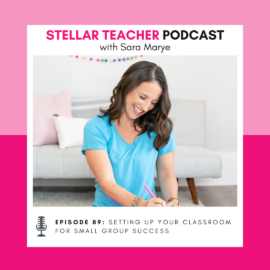
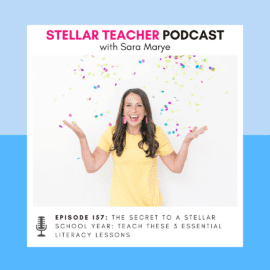
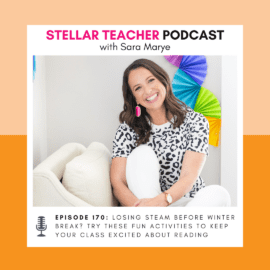
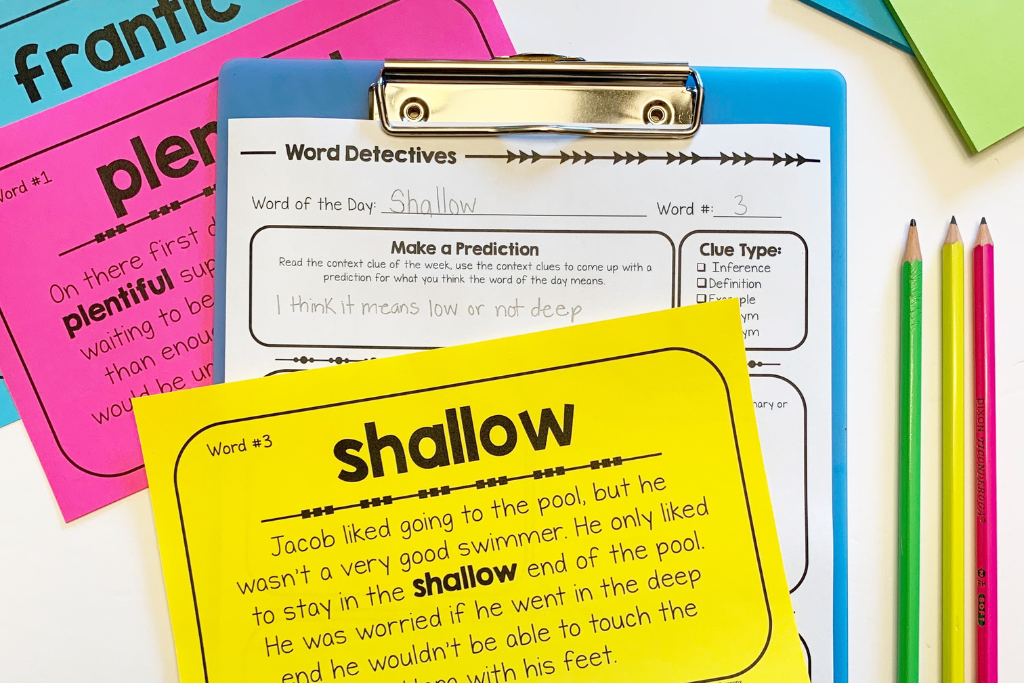

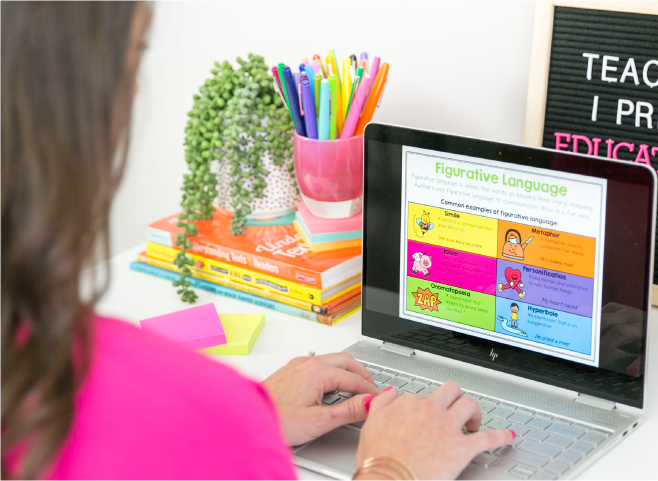
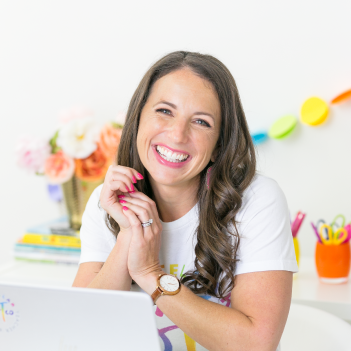
Leave a Comment
You must be logged in to post a comment.